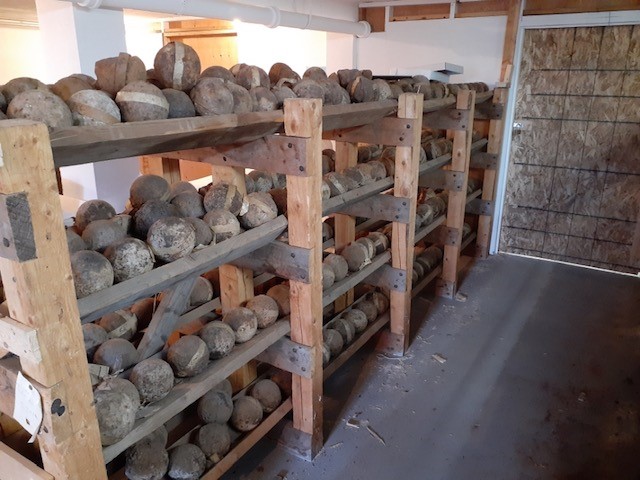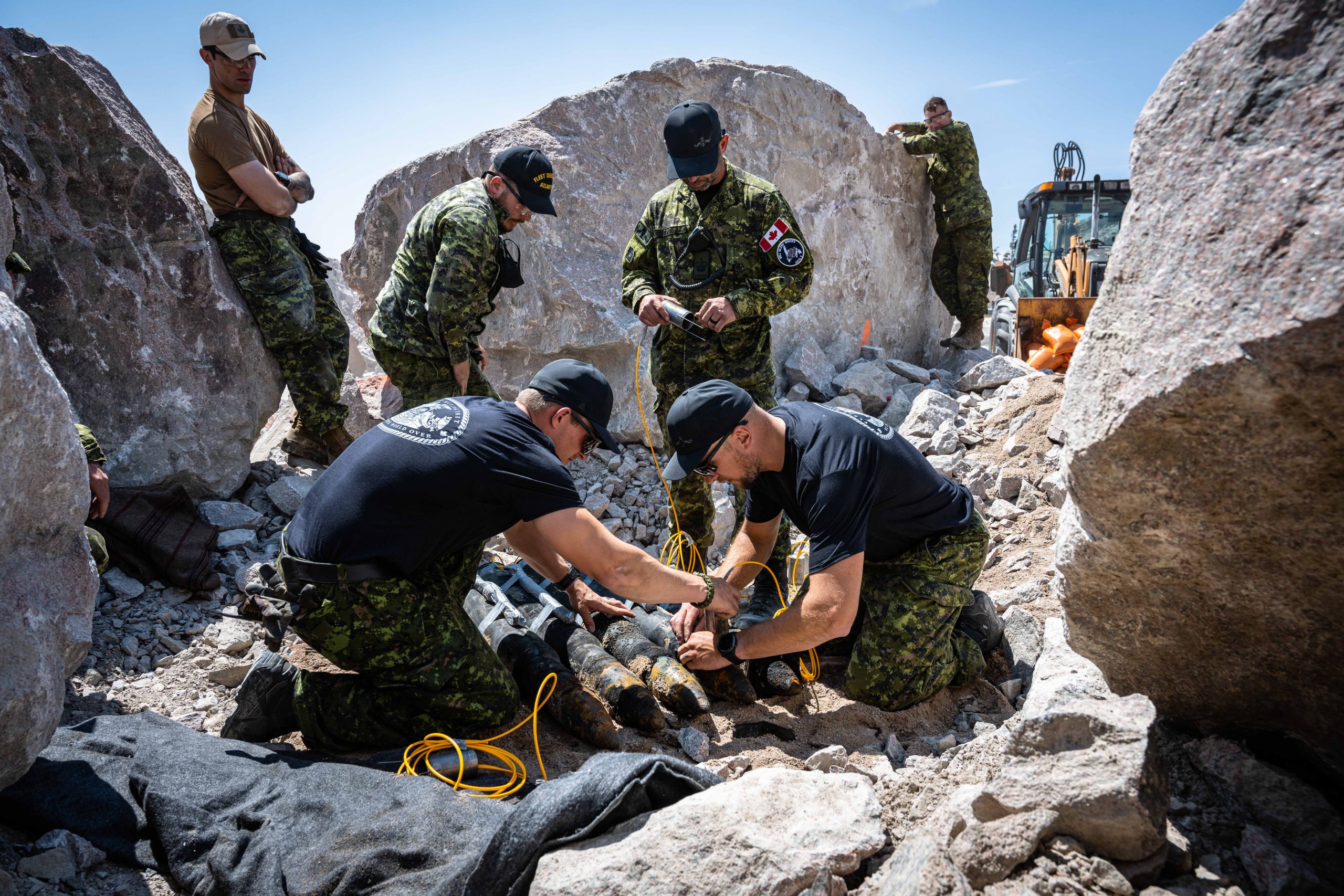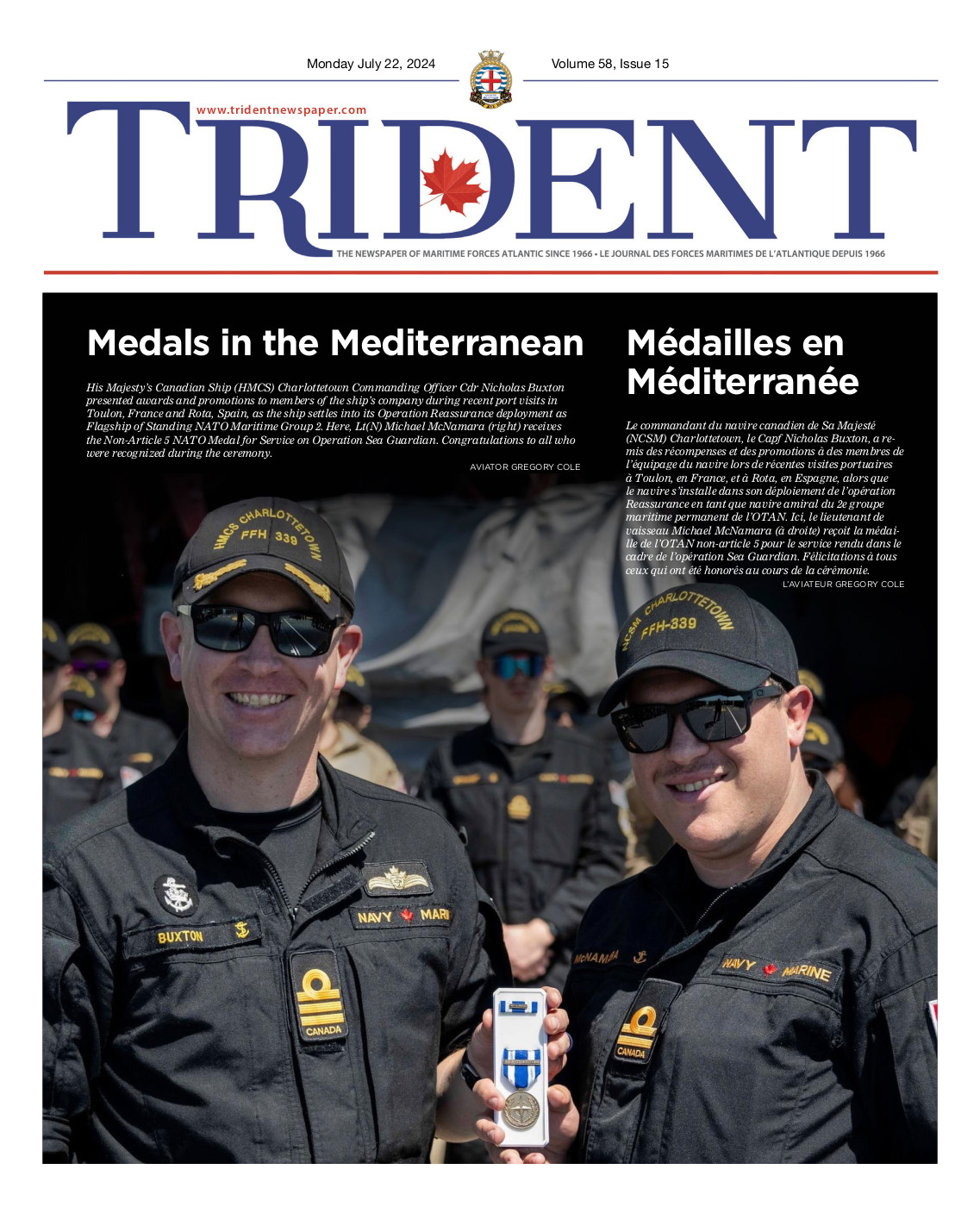
JTFA
FDU(A) clears the way
Clearance divers help remove cannonballs from Fortress of Louisbourg after cleaning up sunken Second World War wrecks
Par Joanie Veitch,
Trident News
Clearance divers from Fleet Diving Unit (Atlantic) (FDU(A)) got to dive into a piece of Nova Scotia history as they transported more than 100 cannonballs from the Fortress of Louisbourg to CFB Gagetown for disposal recently.
The cannonballs date back to the 1700s and were among hundreds at the Fortress of Louisbourg National Historic Site.
“We have seen things from that era before but this is certainly some of the oldest ordnance we’ve ever handled,” said Lieutenant-Commander (LCdr) Neville Lockyer, FDU(A) Commanding Officer.
Established by French colonialists in the early 1700s, the Fortress of Louisbourg was a thriving support base for French naval forces before it was besieged and taken by the British, first in 1745 and then again in 1758. Abandoned in the mid-1780s, the site was designated as a National Historic Site in 1920 and in 1961, Parks Canada began the historical reconstruction of the town and fortifications.
Recovered over many years, the cannonballs had been catalogued and kept in storage on shelves before site staff began to question whether or not they might still be dangerous.
“It was a controlled environment, fairly stable, but nonetheless it was something that… they just wanted to get rid of, just to be on the safe side,” said LCdr Lockyer.
Generally when people discover or — as in the situation at the Fortress of Louisbourg — have concerns about possible explosives, they are advised to call the police or military to file a report. From there the call goes to Regional Joint Operations Centre (Atlantic) to assign the task of removal, explained LCdr Lockyer.
Tasked with removing the cannonballs, a combined team of FDU(A) clearance divers and ammunition technicians from Canadian Forces Ammunition Depot (CFAD) Bedford did a site reconnaissance to assess and plan the operation.

CPL BRADEN TRUDEAU
From November 2 to November 10, the team separated the cannonballs that contained black powder — gunpowder — and took them to CFB Gagetown for disposal.
A highly specialized trade, clearance divers are trained to locate, diffuse and remove unexploded ordnance, both in the water and on land.
This past summer, a team of clearance divers from both the east and west coasts, as well as combat divers from 4 Combat Engineer Support Regiment, returned to Conception Bay, near Bell Island, NL, to finish an operation first began in 2018, dealing with unexploded ordnance from the sunken wrecks of iron ore carriers from the Second World War.
During the Battle of the Atlantic, the four ships — equipped with weapons and explosives — had carried iron ore from Bell Island’s mine to steel mills in Nova Scotia as part of the war effort.
Steam Ship (SS) Saganaga and SS Lord Strathcona were both sunk on September 5, 1942 after being hit by torpedoes from a German U-boat, SS Rose Castle and SS PLM 27, were torpedoed and sank in the same attack on November 2, 1942.
While dealing with ordnance from the Second World War isn’t that unusual in these parts, it’s always exciting to get out and do the work, said LCdr Lockyer.
“For clearance divers, this is what they’re trained to do so to get a chance to use that learning, it’s a big thing.”
FDU(A) has about 50 clearance divers at the unit, with another 12 to 15 port divers and two to three ship divers. Each year, beginning in February, clearance diver candidates are assessed by the Clearance Diver Assessment Centre in what is known to be a rigorous selection process. Once through that process, divers go through two years of training before they can work as clearance divers.
“They work hard to get here,” said LCdr Lockyer.





